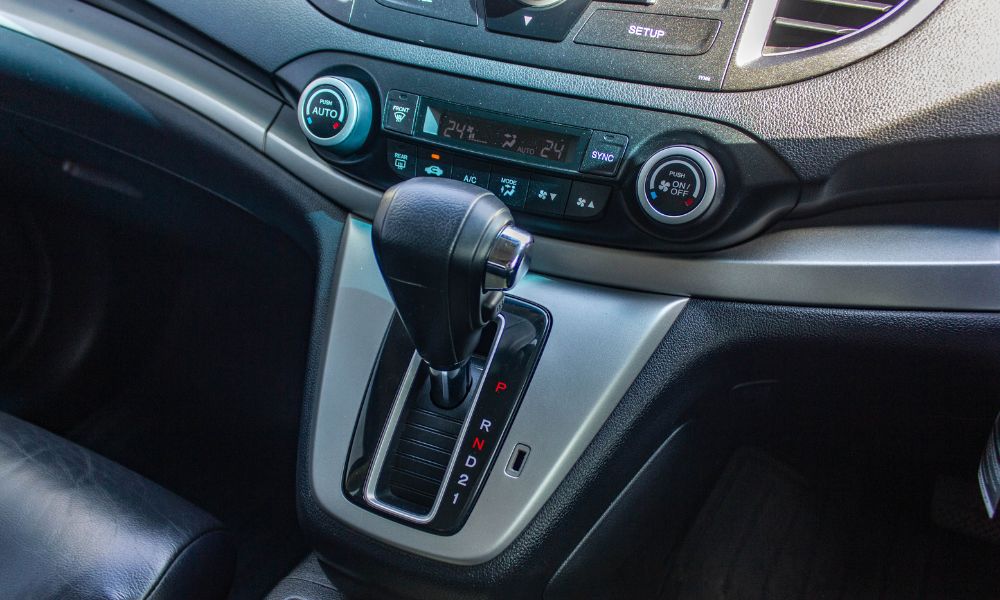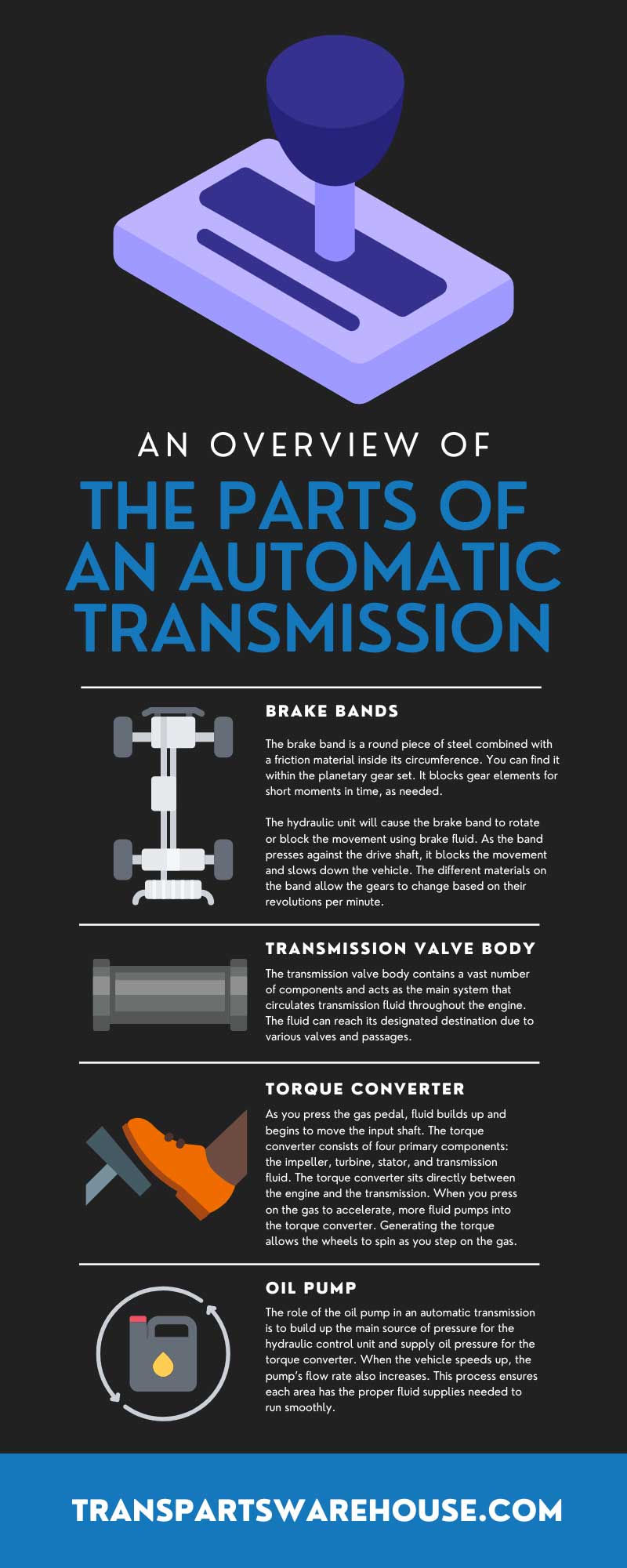
Most drive vehicles with automatic transmissions. Be that as it may, many drivers are unaware of the inner workings of their car’s transmission. If a part is malfunctioning or you simply want to know more about the car you’re driving, read this brief overview of the parts of an automatic transmission.
What’s the Purpose of the Transmission?
First, you should know what the transmission does for your car before diving into each of its parts. The transmission allows the engine to spin at the ideal speed to simultaneously administer power to the car’s wheels. The transmission works tirelessly to make the car run efficiently, from driving at high speeds to coming to a complete stop.
Automatic transmissions are hydraulic systems, meaning that the system transports liquid through a series of components to generate power. Therefore, various components within the transmission utilize fluids to create power and allow the car to run efficiently.
Planetary Gear Set
The planetary gear set allows the automatic transmission to change gears smoothly when accelerating and decelerating. Almost all modern automatic vehicles contain a planetary gear set. There’s no need to worry when shifting gears because this mechanism will help create a fluid transition while driving.
The gear set consists of a sun, planet, and ring gear. The ring gear is a large circular part encompassing the sun and planet gear. As the vehicle changes speeds, the gears lock these different parts to generate different gear ratios.
Brake Bands
The brake band is a round piece of steel combined with a friction material inside its circumference. You can find it within the planetary gear set. It blocks gear elements for short moments in time, as needed.
The hydraulic unit will cause the brake band to rotate or block the movement using brake fluid. As the band presses against the drive shaft, it blocks the movement and slows down the vehicle. The different materials on the band allow the gears to change based on their revolutions per minute.
Clutch Pack
You can locate the automatic transmission clutch pack within the clutch drum. The clutch pack consists of round parts lined with friction material that easily grip together.
A piston inside the drum compresses the clutch pack together using oil pressure, locking the clutch pack into place within the drum.
The purpose of the clutch pack is to regulate power. As the discs press together, the frictional force creates the torque they administer to the wheels.
Transmission Valve Body
The transmission valve body contains a vast number of components and acts as the main system that circulates transmission fluid throughout the engine. The fluid can reach its designated destination due to various valves and passages.
Some of the essential components of the valve body include the governor, throttle, shift, vacuum, and pressure regulator. Each element serves a strong purpose. They’re essential for shifting into each gear efficiently and controlling the revolutions per minute.
Torque Converter
Torque is the measure of a force that causes an object to rotate on an axis. Concerning cars, the torque converter is a type of fluid coupling that spins partially independently from the transmission.
As you press the gas pedal, fluid builds up and begins to move the input shaft. The torque converter consists of four primary components: the impeller, turbine, stator, and transmission fluid. The torque converter sits directly between the engine and the transmission. When you press on the gas to accelerate, more fluid pumps into the torque converter. Generating the torque allows the wheels to spin as you step on the gas.
The same idea applies when you’re pressing the brake pedal. Less fluid pumps through the system, giving the wheels less power and allowing the vehicle to slow down.
Input Shaft
All this energy needs a place to go. As the engine generates energy, it connects to the input shaft. It drives the set of gears that allow the power to transmit through the transmission and reach the wheels’ axles. When you change speeds, the rotation of the input shaft also changes and impacts the amount of energy the vehicle produces.
Output Shaft
The vehicle needs an output shaft for the wheels to receive the power the engine and transmission generate. It sits at the end of the transmission and connects in a straight line to the input shaft. The output will receive the power and spin at the desired speed as determined by the driver.
The input and output shafts must work together. It ensures the transmission stays in the proper gear that correlates with the desired speed while driving.
Oil Pump
Without fluids, transmissions won’t work. The fluids are necessary to create pressure, generate power, and lubricate the metal mechanisms.
The role of the oil pump in an automatic transmission is to build up the main source of pressure for the hydraulic control unit and supply oil pressure for the torque converter. When the vehicle speeds up, the pump’s flow rate also increases. This process ensures each area has the proper fluid supplies needed to run smoothly.
The oil pump is either a fixed-displacement or a variable-displacement pump. The gear oil pump is a fixed-displacement pump that uses an outer and inner gear to force fluid from the input to the output. The vane pump is a variable-displacement pump with a slide component that uses the spring’s pressure to keep fluid flowing as the vehicle’s speed changes.
Automatic Transmission Seals
You don’t want to risk a leakage with fluids pumping through the transmission as the car runs. That’s what seals are for!
Most automatic transmission seals include elastic materials, such as plastics, silicones, polyurethane, and synthetic rubbers. It’s essential to have flexible materials that can easily adapt to movement within the transmission unit.
You’ll have either positive or non-positive seals. Positive seals do not allow any leaks. Non-positive seals will allow some liquids to pass through to lubricate the necessary moving parts.
With this overview of automatic transmission parts, you can grow your understanding of your vehicle. The next time you hear a clunking sound or grinding gears, you may feel better equipped to diagnose the issue.
Find high-quality automatic transmission parts for sale at Transparts Warehouse. Contact our team today to get the replacement parts you can rely on for an efficient repair.


